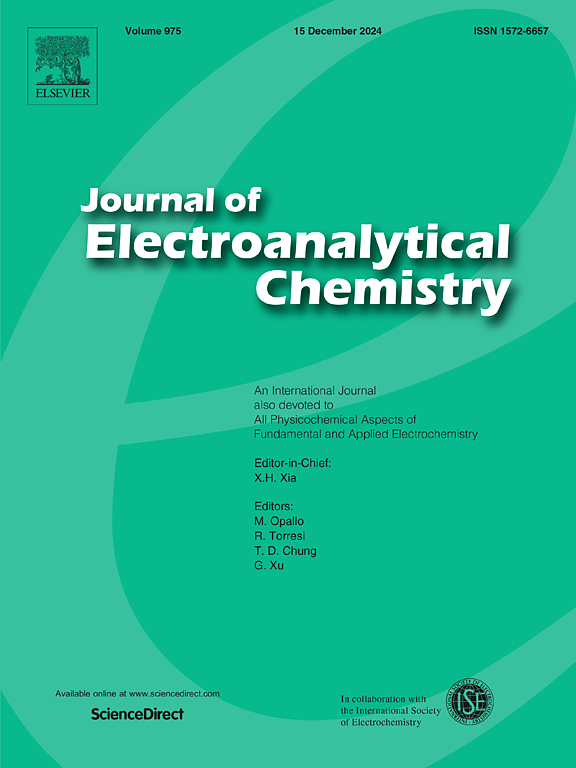采用电沉积Mn掺杂策略构建了超高活性析氢电催化剂
IF 4.1
3区 化学
Q1 CHEMISTRY, ANALYTICAL
引用次数: 0
摘要
碱水裂化电催化析氢工艺在生产清洁氢气方面具有广泛的应用前景。从地球上丰富的元素中精心设计出高稳定、高活性的电催化剂是目前的主要研究方向。在泡沫镍(NF)上原位合成了Ni-S-Mn/NF催化剂。由MnS2、MnS、NiS和Mn掺杂剂组成的多晶结构极大地优化了电荷转移并操纵了电子结构。基于这些结果,所制备的Ni-S-Mn/NF材料可以作为一种高活性的析氢电催化剂,而不需要粘合剂。Ni-S-Mn/NF具有比未掺杂和单相样品以及大多数记录的HER催化剂低得多的过电位(在10 mA cm−2时为41 mV)。此外,催化剂的电容(Cdl)为124.3 mF cm−2,表明其具有优异的电化学性能。这一发现为基于非贵金属制备高活性、长效HER电催化剂提供了可行的策略。本文章由计算机程序翻译,如有差异,请以英文原文为准。
Ultrahigh activity hydrogen evolution electrocatalyst was constructed by electrodeposition Mn doping strategy
The alkaline water cracking electrocatalytic hydrogen evolution process (HER) offers a wide range of applications in the production of clean hydrogen. Carefully designing highly stable and active electrocatalysts from the plenty of elements on Earth is now the main research direction. The Ni-S-Mn/NF catalyst was synthesized in situ on nickel foam (NF). The polycrystalline structure composed of MnS2, MnS, NiS and Mn dopants greatly optimizes charge transfer and manipulates the electronic structure. Based on the results, the created Ni-S-Mn/NF material may be employed as a highly active electrocatalyst for hydrogen evolution without the need for a binder. The Ni-S-Mn/NF has a much lower overpotential (41 mV at 10 mA cm−2) than undoped and single-phase samples, as well as the majority of documented HER catalysts. In addition, the catalysts display a prominent capacitance (Cdl) of 124.3 mF cm−2, which indicates their excellent electrochemical performance. This discovery provides a feasible strategy for producing highly active and long-lasting HER electrocatalysts based on non-precious metals.
求助全文
通过发布文献求助,成功后即可免费获取论文全文。
去求助
来源期刊
CiteScore
7.80
自引率
6.70%
发文量
912
审稿时长
2.4 months
期刊介绍:
The Journal of Electroanalytical Chemistry is the foremost international journal devoted to the interdisciplinary subject of electrochemistry in all its aspects, theoretical as well as applied.
Electrochemistry is a wide ranging area that is in a state of continuous evolution. Rather than compiling a long list of topics covered by the Journal, the editors would like to draw particular attention to the key issues of novelty, topicality and quality. Papers should present new and interesting electrochemical science in a way that is accessible to the reader. The presentation and discussion should be at a level that is consistent with the international status of the Journal. Reports describing the application of well-established techniques to problems that are essentially technical will not be accepted. Similarly, papers that report observations but fail to provide adequate interpretation will be rejected by the Editors. Papers dealing with technical electrochemistry should be submitted to other specialist journals unless the authors can show that their work provides substantially new insights into electrochemical processes.

 求助内容:
求助内容: 应助结果提醒方式:
应助结果提醒方式:


